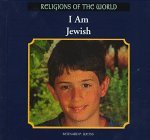
I Am Jewish
By Bernard P. Weiss
|
Basic information from the perspective of young people who are members of the worldwide spiritual communities represented in the series. All of these children have a strong commitment to their religion ... David, who lives in St. Louis, is an observant Jew. This title gives special attention to the links of Jews today with their history and with the land of Israel. Difficult theological ideas such as salvation are presented in a gentle and reassuring manner. All of these titles feature phonetic spellings of unfamiliar words within the narratives. Full-page, full-color photos appear opposite each page of brief text and convey the unique qualities of each religion; this is especially true when marriage ceremonies are described.
Description from School Library Journal

Once Upon a Time
By Draizy Zelcer
|
For a 3-6 year old, this book is simply an enjoyable story about
the value of time in Jewish life, with whimsical illustrations and humorous
rhymes. For older children who are ready to learn how to tell time, this
book is also a comprehensive teaching guide.
Description from Publisher
A concept book about telling time, set in a friendly little town where everyone is Jewish and regards each moment of the day as a gift from God. The story is told in rhyming quatrains, one verse to a page, each highlighting events throughout the day where time is important, from seven a.m. when a boy says the prayer recited upon awakening until midnight, when only the rabbi is still awake, studying Torah. Some of these moments, like the sweet-smelling garbage truck that starts at 7:30 or the woman with 15 pairs of twins who does 15 loads of laundry each day at 7:55, seem a bit far-fetched but the large, bright, cartoon illustrations invest them all with humor. Others, like the verse that describes 20 Zeides (grandfathers) reading their seforim (holy books), will be familiar only to children with very strong Jewish backgrounds, even if readers consult the glossary. Clock faces showing the time of day are depicted in a border of gears running across the top of most pages where little men fix the gears, set the clocks, tell readers how to understand the featured time, and provide more visual humor. Although this likable book is probably limited to an observant Jewish readership, within that circle it shows and affirms a way of life that sanctifies even the most mundane of daily activities.
Description from School Library Journal
|
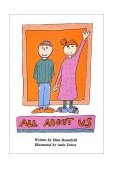
All About Us
|
A preschooler's book about the parts of the body from a Jewish point of view. It explores
the mitzvos that every child can do... from head to toe.
Description from Publisher
Why do we have hands and mouths, eyes and feet? To do mitzvot of course! This delightfully
written and illustrated book gives children of all ages a new perspective on different parts of the body.
Description from L'Chaim
|
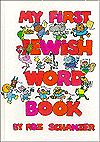
My First Jewish Word Book
|
An appealing introduction to traditional Jewish culture and
holiday observances that's similar in style and format to the
picture indentification books by Richard Scarry (Random). A variety
of animals with cheerful expressions and colorful outfits supply the
action in double-page layouts of a home, synagogue, community, the
state of Israel, and the celebration of several holidays. The simple
text provides a one- or two-sentence background for the lively
ink-and-watercolor illustrations and labels for the objects pictured.
Touches of humor such as a rabbit scrunching his face while receiving
a relative's kiss encourage repeated browsing. The book concludes
with definitions of some of the Hebrew and Yiddish words used in
the text.
Description from School Library Journal
|
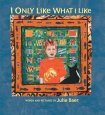
I Only Like What I Like
By Julie Baer
|
His full name is Dewey Jackson Braintree-Berg and he only likes what he likes. He only likes one certain black and white cat. He only likes an apple if it's red. And he only likes one particular yellow and white house. You'd think that a boy with such set likes and dislikes would hardly ever have any fun, wouldn't you? So on Monday, when Dewey, who will only eat noodles shaped like letters, is invited for dinner and sits facing a bowl of squiggly green macaroni, what can he do? How can he eat? And what are those wriggly green squiggles anyway?
Description from Publisher
Bollix Books makes its debut as publisher of this clever picture book. Author-illustrator Julie Baer's full page collages are its most prominent feature, creating impressionistic portraits of a little boy's willingness to change his mind. Mommy cuts up red and green and yellow apples for Jewish New Year and “I got to squeeze the honey bear!” Each vignette is illustrated with a full page picture – described as cut-paper collages using found imagery and hand-painted rice paper – filled with vivid colors, lines, shapes, faces, and human and animal images, each surrounded by a border and resembling quilts. The effect is both personal and symbolic, drawing the reader into a young child's imaginative perceptions of his small world. The Jewish content is presented as a natural and integral – if not major - part of that world.
Description from Jewish Book World
Experiencing something new is the theme of this picture book. Two incidents during Dewey’s week tell us that he is Jewish: he tries green and yellow apples when his family dips them in honey for the Jewish New Year, and he learns to like apartment buildings when visiting his grandmother for “Sabbath pizza” on Friday. Baer’s artwork is gorgeous. Complex combinations of painting and collage grace each page with rich colors, unusual points of view, and beautiful borders... This book will probably be most successful in settings where adults read it aloud to 3-4 year old.
Description from Association of Jewish Libraries Newsletter
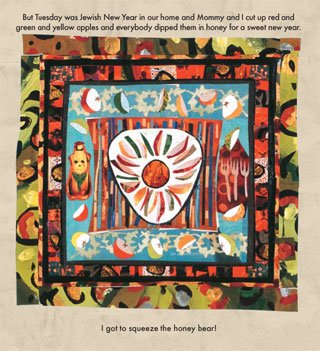
|

My Synagogue
By Cantor Michael Weisser
|
A child's tour of the sanctuary, with hands-on activities to explain everything in the
child's own terms. Light the ner tamid by coloring it. Dress the Torah. Cut
out, fold, and hang the mezuzah on the doorpost of the child's room at home.
Description from Publisher
|

Fins, Feet, Wings and Other Animal Things
By Yaffa Ganz
|
A delightful depiction of the world of animals and their connection
to Torah and the Jewish People. With full color pictures.
Description from Publisher
|
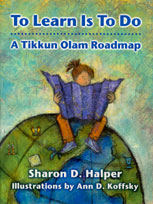
To Learn Is to Do :
A Tikkun Olam Roadmap
|
Provides roadmap of tikkun olam, teaches students that being Jewish involves both
learning and doing, and provides practical, realistic ways for students to begin their
lifelong connection to ethical living . Attractive, humorous black-and-white line drawing.
User-friendly teacher's guide that offers suggestions for classroom implementation also available.
Description from Publisher
|
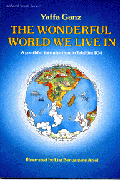
The Wonderful World We Live in :
A Youthful Introduction to Tehillim 104
|
Using King David's Psalm 104, "Borchi Nafshi," Yaffa Ganz takes a fascinating
look at our marvelous world.
Description from Publisher
|
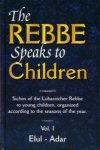
The Rebbe Speaks To Children
By Rabbi Menachem M. Schneerson
Adapted by Rabbi Aharon Leib Raskin
|
Arranged according to the seasons of the year, these easy to understand essays are based on the Lubavitcher Rebbe's talks to Jewish children, members of Tzivos Hashem. Volume one spans the months of Elul through Adar.
The sichos have been simplified and condensed, and then organized according to subjects and concepts in order to render them more accessible to youngsters. At the same time, the publishers tried as far as possible to preserve the language of the Rebbe.
The young reader will find insights on basic ideas in Judaism, advice concerning the struggle with the Yetzer Hora, and the day to day challenges that present themselves from without and from within, and lots of practical advice for Jewish children in their daily lives.
These concepts were originally taught to children by the Rebbe on their level. Accordingly, the text has been organized into short units in terms that a youngster can deal with, so that each child can learn and appreciate the Rebbe's thoughts as they were spoken.
Invaluable for parents concerning raising their children in ways of Torah with the warmth of Chassidus. For teachers and educators, this is a literal treasure trove of ideas and insights for classroom use.
Description from Publisher
|
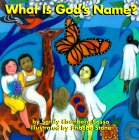
What Is God's Name?
(Board Book)
By Sandy Eisenberg Sasso
|
Every child develops an image of God by age 5, say spiritual experts. This simple,
beautiful book will help you and your child explore spirituality together for the first time.
For people of all faiths, all backgrounds. Based on the award-winning picture
book In God's Name.
Much has been written about the importance of reading simple, beautiful books to
babies and preschoolers to stimulate brain development. But perhaps even more
important, what you read begins to shape your child's world, and creates the
images that will remain with him or her throughout life.
We read books to our children about letters, numbers, shapes, colors and safety,
but do we give their minds the early food they need to think about life's bigger
questions? As spiritual development experts now tell us, each child develops an
mage of God by age 5, with or without religious instruction. What is God's
Name? takes you and your child on an imaginative journey designed to help
you open not only your child's mind, but your child's heart and soul as well.
Description from Publisher
|
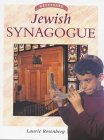
Jewish Synagogue
(Keystones Series)
|
|
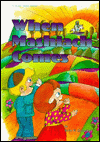
When Mashiach Comes
|
Explore the year’s many mitzvos. Which will we be doing at the
great moment? We don’t know. But let’s pave the way for
Mashiach with mitzvos, showing everyone that "we’re ready!"
Description from Publisher
|
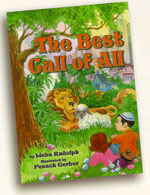
Best Call of All
|
When the shofar announces that the Moshiach is here, Benny sees that everything in the
world and all of the people have changed and become filled with goodness.
|
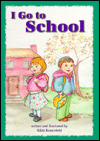
I Go to School
|
This picture book is perfect for parents and toddlers to read together in
preparation for an important milestone. Soft, watercolor illustrations
and simple rhyming text perfectly convey the message that school is a
warm and cozy place to learn Torah, do mitzvos, and have fun!
Description from Publisher
Two children joyfully offer a glimpse of what it's like to attend their
religious school in this simple, informative picture book. Benenfeld's
verse describes a typical preschool routine of stories, games, snacks and
naps that will ring familiar for many children: "I have my own cubby,
look and see, and a chair near the table that's just for me." But the
author also introduces some of the elements that make it unique: tzedakah
(giving money to charity), davening (praying) and learning the aleph-bets
(or Hebrew alphabet).
Description from Publishers Weekly
|
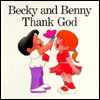
Becky & Benny Thank God
|
Children will love touching the clouds and smelling the flowers with their
friends Becky and Benny! This beautiful and entertaining volume includes
manipulative shutters depicting day and night scenes; soft, cottony clouds;
tree "bark"; sparkling sun, moon and stars; a mylar mirror, and
scratch-and-sniff flowers. Something to touch, feel, smell or see for each
day of creation and the Sabbath! This is a book not only about God's
creation, but also about discovery, appreciation of, and interaction with
the surrounding environment. Appropriate for any family that wants to
make God, Torah, and religion accessible, interactive, entertaining, tangible and fun!
Description from Publisher
|
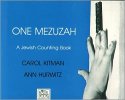
One Mezuzah:
A Jewish Counting Book
By Carol Kitman
|
A book that introduces everyday Jewish objects and Hebrew numbers, using a counting format that appeals to the very young.
Each number is described in simple language and illustrated with clear, sensitive photographs. Young children are seen interacting with Jewish objects in familiar settings--tasting, touching, smelling, laughing, dancing, singing, praying--experiencing the joys of being Jewish.
Description from Publisher
|

Wonderful World of Hashem:
Birds
By Messody Weinberger
|
In this well-researched, easy to read book, children will learn about
the nesting habits of birds and discover how birds fly. They will
marvel at the spectacular full-color photographs of breathtaking
winged creatures. They will most certainly enjoy the special sections
about birds in the Torah and Jewish stories about birds. Suggested
follow-up activities included.
Description from Publisher
A Torah approach to natural science is the basis of this beautiful
volume. Here, the author has researched and presented tons of
information about the fascinating behavior of birds. Chapters
include: What Do Birds Eat? How Do Birds Fly? Eggs and Chicks, and
my favorite section - Birds in the Torah. There is also a section of
Jewish stories about birds, a list of reference books, and follow-up
activities to encourage a child's interest. The text is clear and
well-written, the photographs are stunning, and the diagrams add a
great deal of clarity to the subject.
Description from N'shei Chabad Newsletter
|
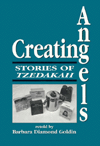
Creating Angels :
Stories of Tzedakah
|
The Hebrew word tzedakah is often translated as "charity." But it actually means something
different - it means "justice" or "righteousness." According to the Jewish Sages, tzedakah
means we have an obligation to give to those in need - not only when we are feeling generous,
but on a regular basis. One talmudic Sage, Rabbi Assi, believed the commandment of tzedakah
to be so important that he said, "Tzedakah is as important as all other commandments put
together". Barbara Diamond Goldin has brought these stories of tzedakah together in the hope
that they will inspire the young and the old, the rich and the poor, to give to those in need and to
adopt a righteous sensibility and sensitivity akin to the commandment of performing acts of
loving-kindness. By performing these mitzvot, we all engage in tikkun olam - repair of the world -
and, according to the Sages, each good deed we perform in the physical world creates an angel
in the metaphysical world. This book should encourage readers to create their own angels and to
recapture the significance of the mitzvah of tzedakah to the Jewish community, even to the world,
today.
Description from Publisher
|
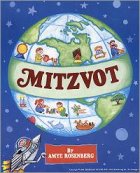
Mitzvot
By Amye Rosenberg
|
Playful activities introduce students to the mitzvot every Jewish child is
expected to fulfill, including: Honor your father and mother, Tell
the truth and keep promises , Return lost property, Shalom
bayit, and Be kind to animals. All culminating in Tikkun Olam
and the Crown of a Good Name.
Description from Publisher
|
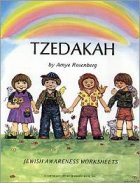
Tzedakah
By Amye Rosenberg
|
Simple activities teach opportunities for tzedakah and kindness in
the child's everyday world. A child's version of Maimonides' "ladder
of tzedakah," a Keren Ami box to color and assemble, tzedakah
puzzles, finger puppets, and games.
Description from Publisher
|
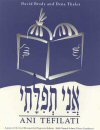
Ani Tefilati
By David Brody and Dena Thaler
|
Fully illustrated, this prayer program captures the interest of young students who have a reading knowledge of Hebrew. Perfectly suited for primary grades in day schools or elementary-level students in supplementary schools, this combination prayer book and workbook invites young readers to explore the meaning of the prayers. Students are encouraged to respond to each prayer in an individual and dynamic fashion, thus creating their own personal prayer book in an enjoyable way. The authors have identified the major themes of the prayers, encouraging children to draw out their meaning. A teacher's guide, in Hebrew and English, leads instructors through each prayer, providing historical background and a novel approach to teaching the prayers.
Description from Publisher
|

A Trip to Mezuzah Land
By Sara Lieberman
|
Morah Chana takes her class on a wondrous trip through the
skies to learn all about the Mezuzah. They meet the
scribe who carefully writes each word, and see an assortment
of beautiful Mezuzah cases. Rhyming lines and softly-colored
illustrations make this charming book one that children will
want to read over and over again.
Description from Publisher
|
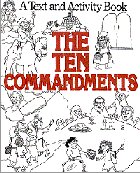
Ten Commandments :
Text and Activity Book
by Nancy Karkowsky
|
Explore the moral lessons of the Ten Commandments with timeless stories from
the Bible, Talmud, and Jewish folklore. Presented in child-friendly, everyday
English, each commandment is accompanied by hands-on activities to help
students integrate the lessons into their own lives. A dramatic classroom experiment
demonstrates before the children's own eyes why we know Hashem is always
there even though we cannot see, hear, or touch Him.
Description from Publisher
|
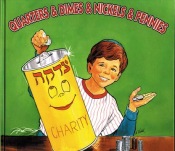
Quarters and Dimes and Nickels and Pennies
|
|
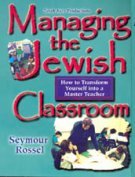
Managing the Jewish Classroom :
How to Transform Yourself into a Master Teacher
By Seymour Rossel
|
Gives teachers new skills in order to become master teachers. Included are techniques for classroom management, communication, relevancy and much more. Includes new material and significant rewritting.
Description from Publisher
|
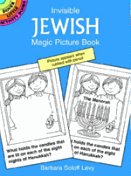
The Invisible Jewish Magic Picture
By Barbara Soloff Levy
|
Delightful activity book contains 16 "invisible" pictures relating to Jewish heritage and culture. Star of David, Torah scrolls, mezuzah, shofar, other images magically appear when rubbed with pencil.
Description from Publisher
|
|



























